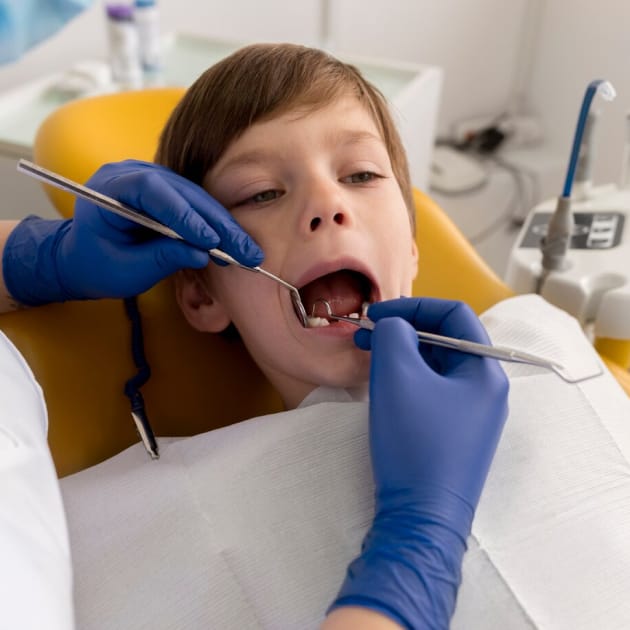
We offer the region’s best solutions for restorative dentistry because children, like adults, no matter how hard we try, can experience tooth decay, trauma, or developmental dental issues that affect oral health and function. Here are key reasons why restorative dentistry is essential in our pediatric dental practice:
Treats Cavities and Prevents Infection: Tooth decay is common in children. Restorative treatments like fillings and crowns stop the spread of decay, protect the tooth’s structure, and prevent painful infections.
Maintains Proper Function: Damaged or decayed teeth can interfere with chewing and speech development. Restorative care ensures children can eat and speak properly.
Supports Jaw and Tooth Development: Primary (baby) teeth hold space for permanent teeth. Restoring damaged primary teeth helps maintain proper alignment and guides permanent teeth into the right position.
Promotes Long-Term Oral Health: Early restorative treatment can prevent more severe issues later, reducing the need for complex procedures in the future.
Improves Self-Esteem and Comfort: Treating dental problems helps kids avoid pain and embarrassment from visible decay or broken teeth, improving their confidence and quality of life.
The stainless steel crown (SSC) is the most durable, long-lasting dental restoration for primary teeth. It covers and protects the tooth until it is naturally lost. The SSC is indicated when:
The SSC is an economical, time-efficient, mercury-free dental restoration that has a 60-year track record for durability and safety!
Zirconia crowns are made of solid, monolithic zirconia, a ceramic material time-tested for its strength and durability in adult dentistry. They are 100% biocompatible. The crown is free of metals-including nickel, commonly used in stainless steel crowns and is therefore a great option if your child has any metal allergies. The zirconia crown is a beautifully esthetic restoration.
Zirconia crowns are made of solid, monolithic zirconia, a ceramic material time-tested for its strength and durability in adult dentistry. They are 100% biocompatible. The crown is free of metals-including nickel, commonly used in stainless steel crowns and is therefore a great option if your child has any metal allergies. The zirconia crown is a beautifully esthetic restoration.
Composite is a white filling material that provides an esthetic dental restoration. It can be used for small to average-sized cavities. Placement of white fillings is very technique sensitive and requires a high level of child cooperation. Advances in dental science have allowed composite fillings to approach the strength and durability of conventional silver fillings.
Silver diamine fluoride (SDF) is an inexpensive topical liquid medicine that is applied directly to dental cavities. It is used for dental caries arrest and treatment of dentin hypersensitivity. It does not require local anesthetic or dental drills thus making it easy to apply. This technique is well suited for pre-cooperative and fearful children, as well as special needs and medically compromised patients who may otherwise require dental sedation for traditional fillings and crowns.
Delays or avoids traditional dental restorations. Arrests 80% of cavities when placed biannually. Helps decrease sensitivity Fast, Easy to apply, painless
SDF permanently stains cavities black Not indicated for large or deep cavities 20% of cavities may continue to get worse Treated cavities with SDF may still require future restoration Does not restore form or function of lost tooth structure
Resin infiltration is primarily used to arrest the progression of small cavities between the teeth in the flossing areas. The aim of the resin infiltration technique is to allow penetration of the resin into the porous enamel which then serves as a barrier to acids and theoretically prevents the cavity from progressing. This technique helps avoid traditional drilling and filling. Resin infiltration is also a technique used to improve the cosmetic appearance of front teeth that have white and brown spotting after braces are removed or due to enamel hypomineralization.

Preventive Dentistry

ABCD Program

Myofunctional Therapy

Surgery Center

Behavior Guidance

Emergency Treatment

Tongue-Tie Frenectomy

Interceptive Orthodontics

Connect with us on Facebook
Connect with us on Instagram
Monday-Friday with variable times to accommodate all of our patients. Our kids dental team is ready for you!